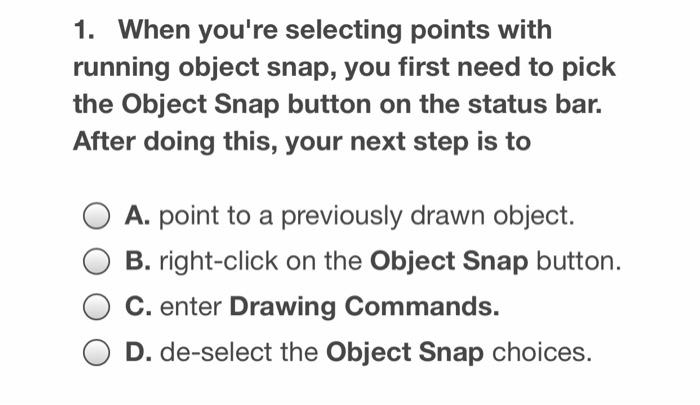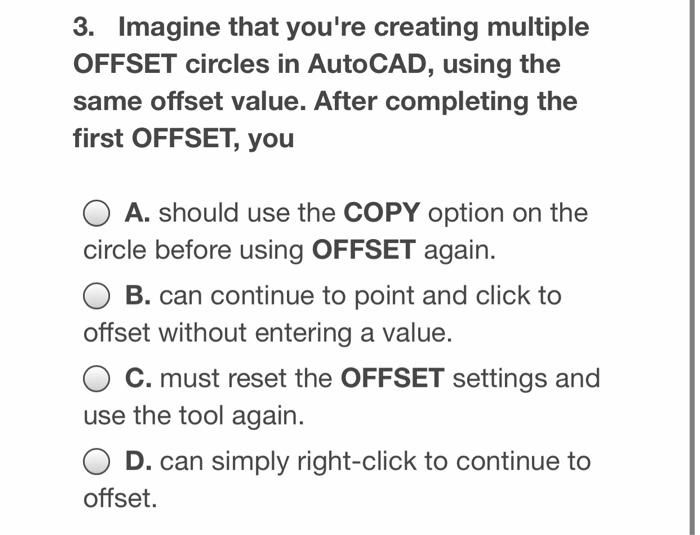1. When you're selecting points with running object snap, you first need to pick the Object Snap button on the status bar. After doing this, your next step is to A. point to a previously drawn object. B. right-click on the Object Snap button. C. enter Drawing Commands. D. de-select the Object Snap choices. 2. When you're using the ZOOM command in AutoCAD, if you zoom 2xp, this means that A. 1 unit in the viewport equals 2 paper space units. B. a model space unit takes on the size of the current paper space unit. C. 2 units in the viewport equals 2 paper space units. D. 2 units in the viewport equals 1 paper space unit. 3. Imagine that you're creating multiple OFFSET circles in AutoCAD, using the same offset value. After completing the first OFFSET, you A. should use the COPY option on the circle before using OFFSET again. O B. can continue to point and click to offset without entering a value. C. must reset the OFFSET settings and use the tool again. D. can simply right-click to continue to offset. 4. When you're using the STRETCH command, if you place an entire object inside the selection window, AutoCAD will react as if O A. the SCALE command was indicated. B. no command was indicated. C. the LENGTHEN command was indicated. O D. the MOVE command was indicated. 5. The command in AutoCAD can be a time-saver, particularly when you're working in an application in which you want to move a door or windows within walls on a drawing and don't want to redraw the walls. A. TRIM B. OFFSET C. EXTEND O D. STRETCH 6. To use the Reference option in the ROTATE command, you must A. specify the present orientation of the object. B. right-click and type c. C. draw an object in a horizontal position D. specify the base point. 7. To use the command in AutoCAD, you must have at least two objects, and they must cross or meet. A. OFFSET B. TRIM C. STRETCH D. EXTEND 8. Point acquisition must be completed before you can use A. object snap tracking. B. running object snap. C. single point object snap. D. alignment paths. 9. Object snap tracking creates alignment paths, which can be correctly described as A. extension paths. B. temporary construction lines. C. lines tangent to the object. D. perpendicular construction lines. 10. When you're using the MIRROR command, the of the mirror line will determine where the mirror image is created on the screen. A. base point B. orientation C. grips D. length
















